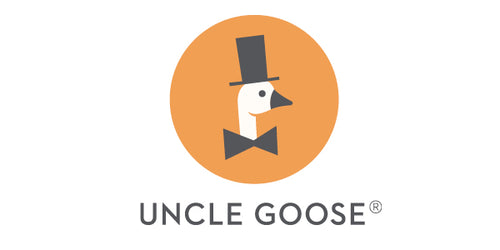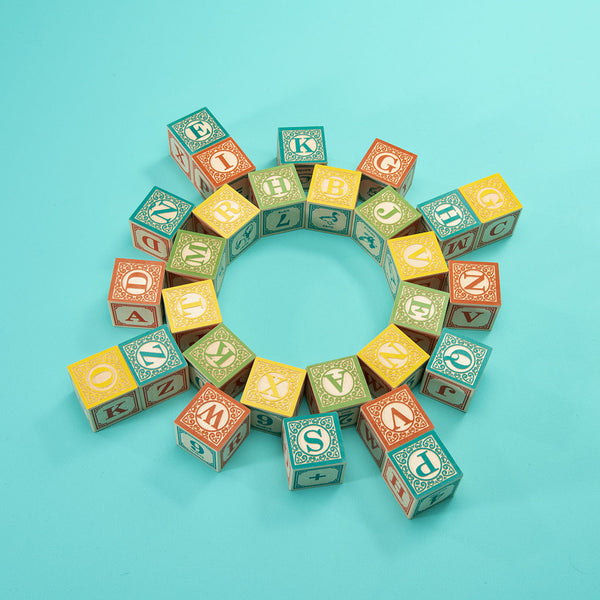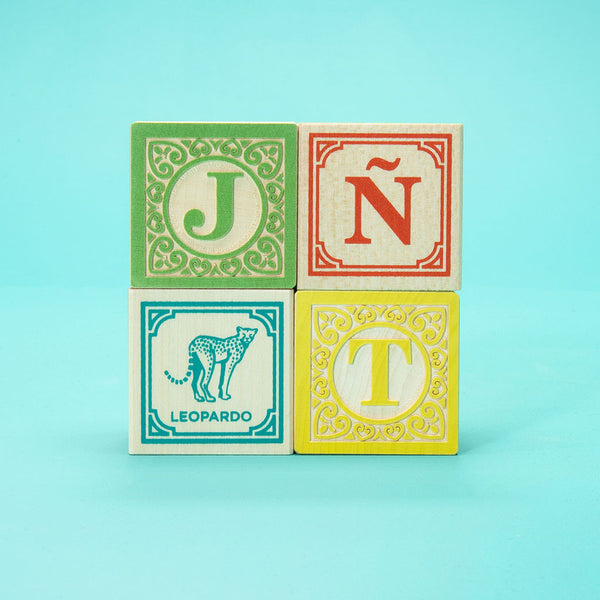
Why no LL and RR on the Spanish Alphabet Blocks?
From time to time, we’ll get the question, “Hey, why isn’t there a double L or a double R on the Uncle Goose Spanish language blocks?” Or, to put it another way:
¿Dónde están los bloques doble L y doble R?
The short answer: it’s because LL isn’t a letter anymore. Before 1994, it was. But now, it isn’t. And RR? It hasn’t been considered a letter for centuries!
For a slightly more nuanced answer, let's look at the modern Spanish alphabet. If you’re learning Spanish, you’ll note the Spanish alphabet has 27 letters. By comparison, the English language has 26 letters.
The Spanish alphabet has one more letter, the eñe. The eñe comes after the letter N in the alphabet. This letter is an N with a tilde on top of it. The ñ or Ñ is the fifteenth letter in the Spanish alphabet.
And there used to be even more Spanish letters! For example, there used to be a double L and a CH, too.
But in 1994, the Spanish Royal Academy eliminated the LL and CH from the Spanish language alphabet. They made this change to make Spanish more computer and keyboard friendly.
This change also streamlines the Spanish alphabet. After all, it’s two less letters!
Instead of having an extra keyboard key for the double L, modern Spanish language typists will instead type two L’s. And instead of having an extra keyboard key for the CH, people can tap a C and an H.
The double R, or RR, is another matter entirely. When you see a double R in a Spanish word, it means you pronounce the word with a rolling r.
It’s a beautiful and distinctive sound, but the double R isn’t considered a letter. That’s because there are no Spanish words that begin with a double r.
Today, if you are spelling a word like dog in Spanish — perro — you’ll type two R’s. That way, you don’t need another key on a keyboard. And if you're spelling perro with Uncle Goose Spanish Alphabet blocks, you'll put two R's together, side-by-side.
Some people weren't happy with these changes. They wanted to keep things the way they were.
But language is a living, growing thing. Over time, it evolves. It changes.
Most languages evolve through popular use. The more people start saying and spelling new words in a new way, the more comfortable we feel about accepting them.
When the Spanish Royal Academy changed the alphabet, they made a bold and immediate decision to evolve. This seemed shocking to many people who are more accustomed to a slower pace of language evolution.
As you learn to read, write, and talk in modern Spanish, you’ll want to know the modern spelling conventions. And if you want to discuss the history and evolution of the Spanish language, you can use our blocks to do that, too!
Try putting two L blocks together. Talk about the history and evolution of that letter combination. You can do the same with the R blocks, and with the C and H blocks. It’s also a great way to talk about the different pronunciations of the words you spell.
Whether you like the changes in language or not: there’s no denying that they happen! Use the blocks as an opportunity to not only learn to spell, but to foster discussions about history and the future of language.


